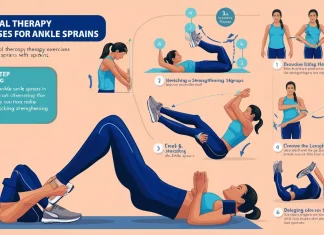Introduction
Education is a transformative journey, but not all learners follow the same path. Some individuals face challenges that traditional teaching methods can’t fully address. This is where educational interventions therapy steps in, offering tailored solutions to bridge the learning gap and empower students to reach their full potential. In this article, we’ll delve into the world of educational interventions therapy, exploring its types, benefits, strategies, and more.
Understanding Educational Interventions Therapy
At its core, educational interventions therapy involves a range of techniques and approaches aimed at assisting individuals with various learning difficulties. Whether it’s children with speech disorders, adults with cognitive impairments, or individuals struggling with behavioral issues, this therapy serves as a beacon of hope. It’s the key to unlocking doors that might otherwise remain closed, enabling learners to grasp concepts, communicate effectively, and thrive in both academic and social settings.
Types of Educational Interventions Therapy
Speech and Language Therapy
Among the branches of educational interventions therapy, speech and language therapy stands out. This specialized approach targets communication disorders, helping individuals articulate their thoughts, feelings, and needs. From stuttering to language delays, therapists work closely with patients to develop clear speech and expressive language skills. For instance, a child with autism might benefit immensely from this therapy, as it facilitates better social interaction and self-expression.
Occupational Therapy
Another pillar of educational interventions therapy is occupational therapy. This multifaceted approach aids individuals in acquiring and refining everyday skills. From fine motor abilities to sensory processing, occupational therapists create personalized plans to enhance functional independence. Children with sensory processing disorders can experience life-changing improvements through tailored sensory integration activities, while adults recovering from injuries can regain vital life skills.
Behavioral Therapy
Behavioral therapy is a cornerstone of educational interventions therapy, focusing on modifying behavior patterns to facilitate better learning and social interactions. By identifying triggers and employing positive reinforcement techniques, therapists help individuals manage behavioral challenges. A child with attention-deficit/hyperactivity disorder (ADHD) can benefit from this therapy, learning strategies to concentrate and control impulses.
Benefits of Educational Interventions Therapy
Improved Learning Outcomes
The impact of educational interventions therapy on learning outcomes is profound. Students who once struggled with reading, writing, or math can experience significant improvements in academic performance. Studies have shown that early intervention in speech and language difficulties can lead to higher literacy rates and overall academic success.
Enhanced Social Skills
Education isn’t solely about textbooks and exams; it’s also about forging meaningful connections. Through educational interventions therapy, individuals develop social skills that extend far beyond the classroom. They learn how to engage in conversations, interpret nonverbal cues, and establish friendships. Witnessing a once-shy child confidently interact with peers is a testament to the power of this therapy.
Boosted Confidence
Educational interventions therapy acts as a catalyst for increased self-confidence. As individuals master skills they once found challenging, their self-esteem soars. A teenager who once felt defeated by dyslexia can become a young adult who excels in written communication. The transformation isn’t just academic—it’s personal and life-altering.
The Process of Getting Educational Interventions Therapy
Assessment and Diagnosis
Embarking on an educational interventions journey begins with assessment and diagnosis. Specialists, such as speech-language pathologists and occupational therapists, evaluate the individual’s strengths, weaknesses, and needs. This thorough evaluation forms the foundation for creating a tailored therapy plan.
Creating Individualized Plans
The heart of educational interventions therapy lies in individualized plans. Therapists collaborate with educators, parents, and the learner to craft a roadmap for success. This plan takes into account the individual’s goals, learning style, and challenges, ensuring a personalized and effective approach.
Therapy Sessions
Therapy sessions are where the magic happens. In speech and language therapy, sessions might involve language exercises, articulation drills, and engaging activities that make learning fun. Occupational therapy sessions could encompass sensory play, fine motor skill practice, and adaptive techniques for daily tasks. Behavioral therapy sessions focus on teaching coping strategies, emotional regulation, and positive behavior reinforcement.
Effective Strategies Within Educational Interventions Therapy
Multisensory Learning
One standout strategy within educational interventions therapy is multisensory learning. This approach taps into multiple senses—visual, auditory, kinesthetic—to enhance learning. For instance, a child learning to read might trace letters with their fingers while saying the corresponding sounds aloud. This multisensory experience reinforces memory and understanding.
Positive Reinforcement
Positive reinforcement plays a pivotal role in sustaining motivation within educational interventions therapy. Offering rewards for accomplishments, no matter how small, encourages individuals to persist. Watching a student’s face light up as they receive praise for correctly solving a math problem exemplifies the effectiveness of positive reinforcement.
Adaptive Techniques
Educational interventions therapy embraces adaptability. Adaptive techniques ensure that therapy methods evolve according to an individual’s progress and needs. What works for one student may not work for another, and therapists are skilled at adjusting their strategies accordingly. This flexibility guarantees that learners receive the support they require at every stage.
Challenges and Considerations
Time and Commitment
While the benefits of educational interventions therapy are substantial, it’s important to acknowledge the commitment required. Consistency is key, and both learners and their families must dedicate time to therapy sessions, practice exercises, and follow-up routines. Managing these demands alongside existing schedules can be challenging but is ultimately rewarding.
Financial Aspects
The financial aspect of educational interventions therapy is a consideration for many. Therapy sessions, assessments, and specialized materials can incur costs. However, resources such as insurance coverage, government programs, and nonprofit organizations exist to alleviate financial burdens. It’s crucial for families to explore these options to ensure access to quality therapy.
Success Stories from Educational Interventions Therapy
Story 1: Unlocking Language
Sarah, a young girl with apraxia of speech, struggled to articulate her thoughts. After consistent speech therapy, she not only improved her speech but also gained confidence to participate in classroom discussions.
Story 2: A Journey to Independence
Alex, a teenager with autism, underwent occupational therapy to develop life skills. With guidance from his therapist, he mastered essential tasks like cooking and dressing, paving the way for greater independence.
The Future of Educational Interventions Therapy
As technology continues to advance, the future of educational interventions therapy holds exciting possibilities. Virtual reality could enhance therapy experiences, making learning even more interactive. Additionally, personalized learning algorithms might tailor interventions with unparalleled precision, ensuring maximum impact.
Conclusion
Educational interventions therapy is a beacon of hope for individuals facing learning challenges. Through speech and language therapy, occupational therapy, and behavioral therapy, countless lives have been transformed. From improved learning outcomes to enhanced social skills and boosted confidence, the impact is profound. While challenges exist, the benefits far outweigh them. As we look toward the future, the evolution of technology promises to take educational interventions to new heights, making education an inclusive and empowering journey for all.
FAQs about Educational Interventions Therapy
Q1: What is the primary goal of educational interventions therapy? A: The primary goal is to provide tailored support to individuals with learning challenges, helping them overcome obstacles and achieve their full potential.
Q2: Are educational interventions therapies only for children? A: No, these therapies cater to individuals of all ages, from children to adults, addressing a wide range of challenges.
Q3: How long does it typically take to see results from these therapies? A: The timeline varies based on the individual’s needs and dedication. Some progress can be seen within weeks, while more significant changes may take several months.
Q4: Are there online resources for educational interventions therapy? A: Yes, there are numerous online platforms offering resources, exercises, and even virtual therapy sessions to support individuals undergoing educational interventions.
Q5: Can educational interventions therapy benefit individuals with mild learning difficulties? A: Absolutely. Educational interventions therapy can be tailored to address mild to severe challenges, ensuring that even minor learning difficulties are effectively managed.


























